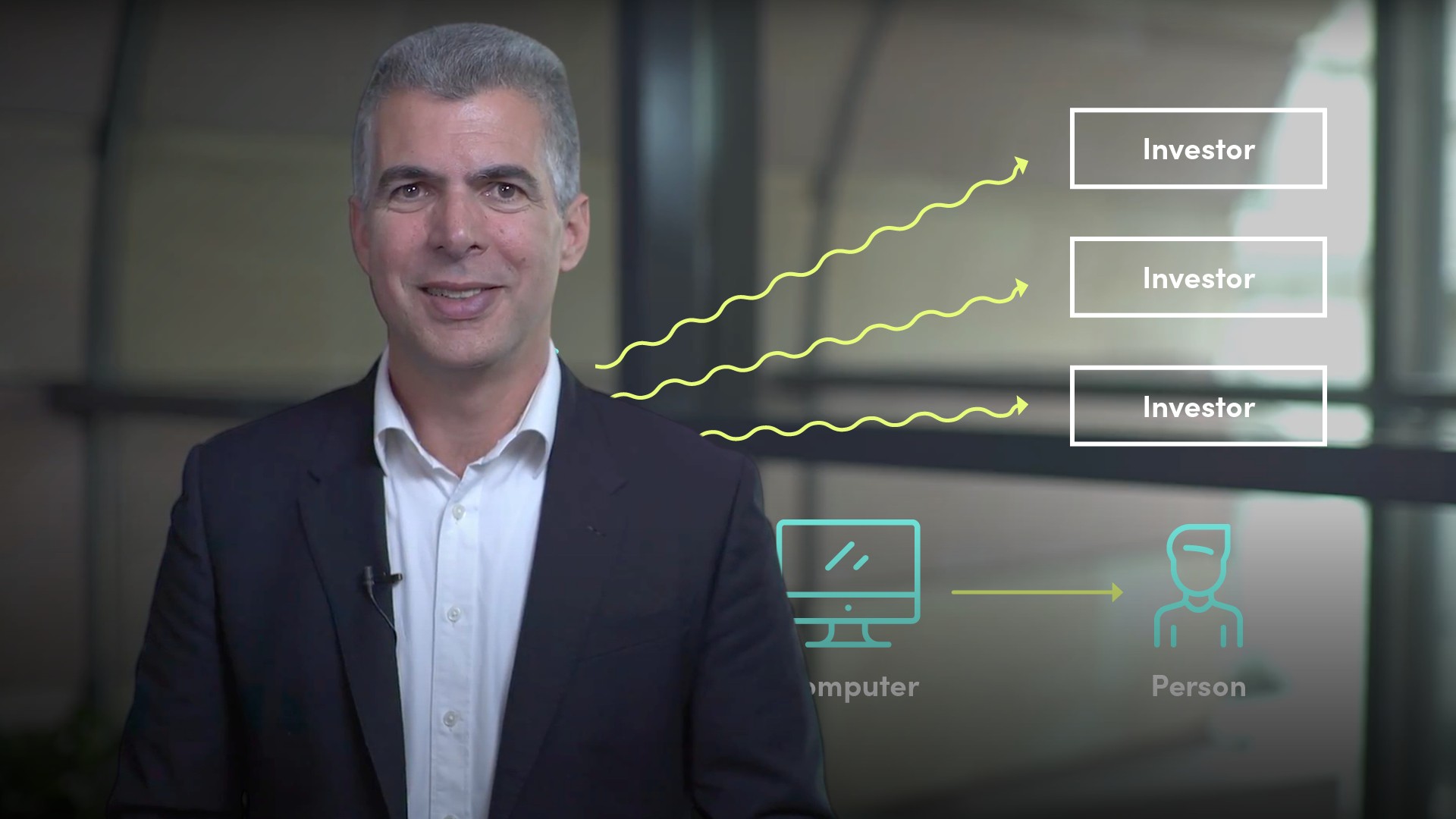
Introduction to Algorithmic Trading

Nir Vulkan
25 years: Financial technology & algo trading
Nir introduces algorithmic trading by answering the following questions: What is algorithmic trading? How do you develop an algorithmic trading model? What is the future of algorithmic trading?
Nir introduces algorithmic trading by answering the following questions: What is algorithmic trading? How do you develop an algorithmic trading model? What is the future of algorithmic trading?
Subscribe to watch
Access this and all of the content on our platform by signing up for a 7-day free trial.

Introduction to Algorithmic Trading
9 mins 6 secs
Key learning objectives:
Define Algorithmic Trading
Discuss the different patterns and systematic biases within the market.
Explain the key requirements in developing an algorithmic trading model.
Overview:
Algorithmic trading is the idea that we create a program that makes trading decision suggestions for humans to execute. This is achieved by taking advantage of systematic biases and patterns within the market. The system created omits human intervention and thus, removes emotion.
Subscribe to watch
Access this and all of the content on our platform by signing up for a 7-day free trial.
What is Algorithmic Trading?
Programming computers to undertake automated trading by pre-programming certain actions in response to changing market data.
What are the different types of Algorithmic Trading?
- Low Frequency - When you take positions in markets and you keep dispositions for days, weeks or sometimes months. This is the more traditional algorithmic trading
- High Frequency – Also referred to as ‘Systematic Trading’ is when the computer trades numerous times a day using the algorithm which takes advantage of movements within the day
- Very High Frequency – Trading takes place in microseconds, being very close to the exchange and trying to get in before everybody else does
Why are there Systematic Biases within the market?
- People are not rational
- Irrationality is common amongst traders
An example of a systematic bias in the market is the tendency of people to sell winners and hold on to losers. The reason these biases are of great importance is they are the basis for patterns. From this we can use mathematical rules to take advantage.
What are the prevalent Patterns?
- Trend/Momentum – When people get into or out of the market they’re inefficient in doing so and thus, there’s a long time gap
- Mean Reversion – This is when a certain market is going up but there isn’t a particular economic reason for it, hence, it’s expected to fall. Certain markets behave the same and thus when one is performing abnormally it’s expected to come back down (Algorithms are created around this)
- Statistical Arbitrage – Understanding that markets behave differently, for example, for different days of the week and thus, this is taken advantage of.
Momentum Trading – This pattern follows the assumption that when there is a ‘wave’ and the market is performing well, people will bet that it’ll continue to rise for a little bit longer. An algorithm will realise this pattern and utilise mathematical rules to take advantage of it.
What are the key requirements in developing an Algorithmic Training model?
- Understanding the abnormality you are trying to capture
- Make sure you have a good understanding of how markets work. For example, terms such as Slipping
- Undertake Statistical Verification
Ensuring Statistical Verification is achieved is vital as there is so much data available, you may become subject to ‘overfitting’ whereby you over-fit the data. Incorrect assumptions can be made when using things that worked in the past. However, that doesn’t ensure it’ll work in the future.
Subscribe to watch
Access this and all of the content on our platform by signing up for a 7-day free trial.

Nir Vulkan
There are no available Videos from "Nir Vulkan"



























